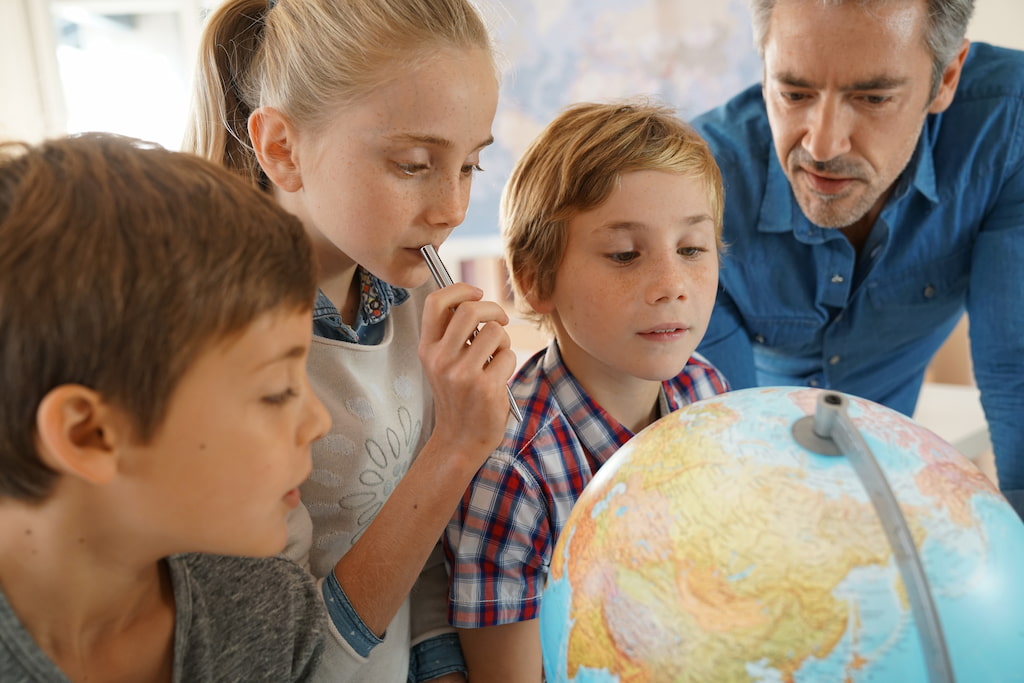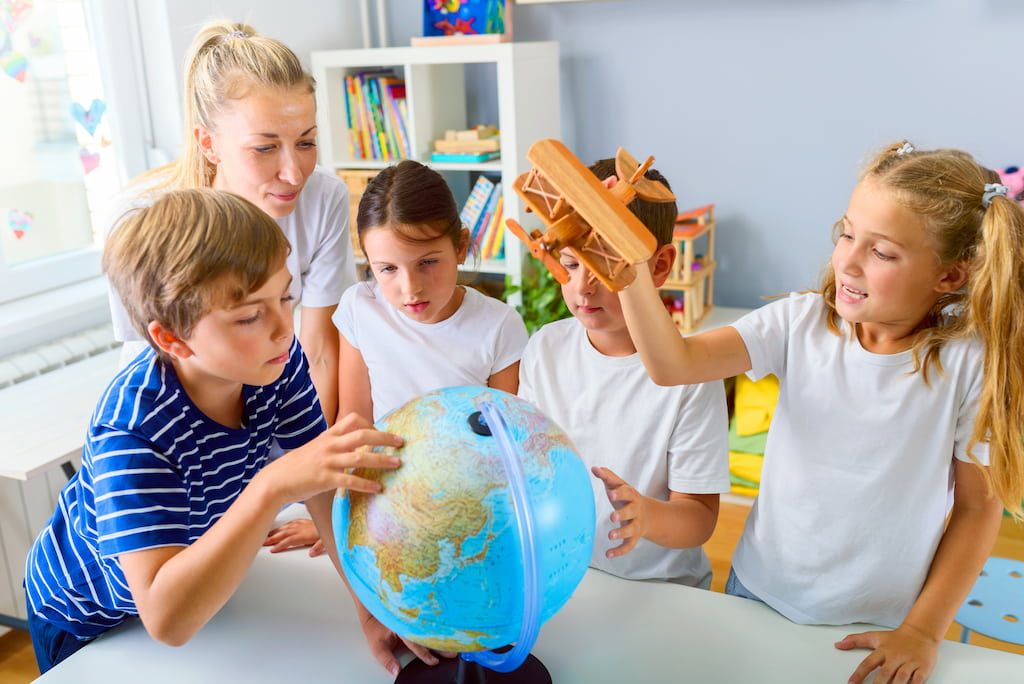6 Advantages of Having a Globe in Your Classroom
Do you remember playing with a globe as a child? There’s something about these maps of the world that fascinates people of all ages. If you’re a teacher, you may be wondering if it’s worth purchasing a globe for your classroom. The new perspective that a globe can give students is invaluable. A desire to learn more about the world is extremely common for kids who get exposed to globes in their childhood.
In this blog post, we will discuss six advantages of having a globe in your classroom!
#1. Globes Help Comprehensive and Tactile Learning
So why are globes important? Let’s start with the fact that they help with comprehensive and tactile learning. When kids are able to spin the globe and touch it, they can start to understand a three-dimensional view of the world. This helps them visualize where countries are in relation to one another, which isn’t possible with a two-dimensional map.
Additionally, teaching globes can show elevation changes and features like mountains, deserts, and forests. This can give kids a better understanding of the physical geography of different areas. Desktop globes with raised relief are easily available for purchase.
#2. Grasping Geography Becomes Much Easier
 Another advantage of having a globe in the classroom is that it becomes much easier for students to grasp geography. We touched on this a little in the last section. When kids can see all the countries and continents together, it’s easy to start making connections between them.
Another advantage of having a globe in the classroom is that it becomes much easier for students to grasp geography. We touched on this a little in the last section. When kids can see all the countries and continents together, it’s easy to start making connections between them.
For example, they may be able to identify which countries are close to the equator or how Europe and Asia are connected by Russia. These are connections that wouldn’t be as apparent on a flat map because of the way the countries are spread out.
One fun activity you can do with a world globe for students is to have them close their eyes and spin the globe. Wherever their finger lands, they have to identify the country and continent. This is a great way for kids to learn about different parts of the world that they may not be familiar with.
#3. Globes Help Kids Understand History
In addition to physical geography, teaching through globes can also help kids understand history. For example, if you’re discussing the Roman Empire, you can show students where all the different provinces were. If you’re talking about World War II, you can trace the different routes that armies took.
There are also a number of historical globes available that show things like how the world looked during different time periods. This can be a great way to visualize changes over time. Compared to reading a textbook, interacting with a historical globe can be much more engaging for students.
#4. Provides a Cross-Cultural Education
Another global advantage is that it can provide a cross-cultural education for students. Globes for educational purposes usually come with a lot of information about different countries. This can include things like the population, capital city, official language, currency, and flag.
When kids are exposed to different cultures at an early age, they can develop a greater understanding and appreciation for them. With a globe in the classroom, you can easily introduce students to different countries and their customs. The importance of globes in developing cultural awareness can’t be overstated.
You can also use it as a starting point for discussions about current events. For example, if there’s a natural disaster in a certain country, you can use the globe to show students where it is and talk about what’s happening.
One activity you can do to promote cross-cultural understanding is to have students find a country on the globe that they’re interested in. They can then research the country and present what they learned to the class.
#5. Globes Demonstrate Relevance and Perspective
 One surprising advantage of globes that we’ll discuss is that they demonstrate relevance and perspective. Kids often think that what they’re learning in school is irrelevant to their lives. However, through the use of globes in teaching, you can show them how what they’re learning is relevant to the world around them.
One surprising advantage of globes that we’ll discuss is that they demonstrate relevance and perspective. Kids often think that what they’re learning in school is irrelevant to their lives. However, through the use of globes in teaching, you can show them how what they’re learning is relevant to the world around them.
For example, if you’re discussing the different types of governments around the world, you can show students how their government compares to others. A globe can also help kids understand time zones and why the sun rises and sets at different times in different parts of the world.
If you have a globe with a built-in light, you can even use it to show how the Earth’s tilt causes seasons. This benefit of the globe is often underestimated, but it’s one of the most important ones.
#6. Helps with Problem Solving Development
Finally, one more advantage of having a globe in the classroom is that it can help with problem-solving development. When kids are exposed to different cultures and perspectives, they learn to think creatively about solutions to problems. They also learn to accept that there may not always be a single “right” answer.
For example, if you’re discussing a controversial topic like immigration, you can use the globe to show students how different countries have different policies. This can help them understand that there are different ways to approach the same problem. It’s also a great way to encourage critical thinking and perspective-taking. Clearly, the uses of globes go far beyond simple aesthetics.
Conclusion
These are just a few of the advantages of a globe being a part of your classroom. If you’re looking for a way to make learning more engaging and fun for your students, a globe is worth considering.
Not only will they learn about physical geography, but they’ll also develop historical, cultural, and problem-solving skills. And best of all, globes are relatively inexpensive and can be used for years to come. You can purchase educational globes from Replogle online today.
If you have any questions about choosing the right globe for your classroom, our team of experts would be happy to help. Contact us today to learn more about our products and how we can help you promote learning in your classroom. Thanks for reading.
